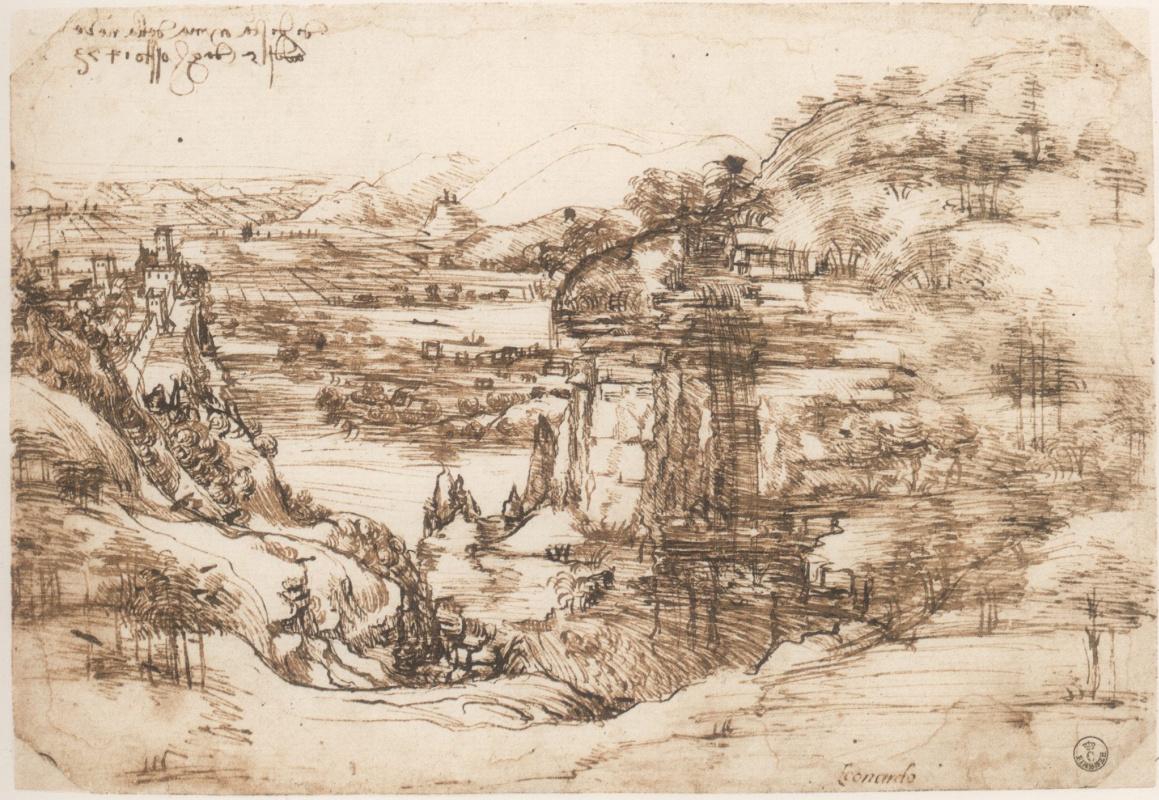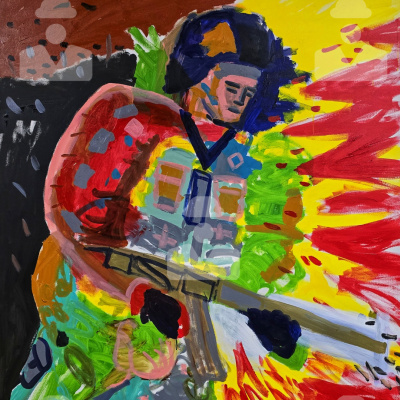Researchers at the Uffizi Gallery in Florence have proved what was suspected for a long time: the Renaissance
genius Leonardo da Vinci was able to write, draw and paint with both hands.

The fact that Leonardo da Vinci was an ambidexter (that is, he equally used both his hands) was proved by the employees of the museum’s research and restoration institute. They analysed a drawing known simply as "Tuscan landscape", which is considered the artist’s earliest work. He executed it in 1473 at the age of 21.
The drawing features the view of the Arno River which flows through Tuscany and Montelupo Castle in the background. There are two handwritten inscriptions on the sheet: the one on the front side is written in the reverse direction, and the one on the other side—from left to right. Researchers have proven that both inscriptions were done by the artist himself. On the front side, he wrote in 'mirror writing'; with his left hand, "and he penned the inscription on the back with his right hand in a usual way," the Uffizi Gallery stated.
The drawing features the view of the Arno River which flows through Tuscany and Montelupo Castle in the background. There are two handwritten inscriptions on the sheet: the one on the front side is written in the reverse direction, and the one on the other side—from left to right. Researchers have proven that both inscriptions were done by the artist himself. On the front side, he wrote in 'mirror writing'; with his left hand, "and he penned the inscription on the back with his right hand in a usual way," the Uffizi Gallery stated.
"Leonardo was born left-handed, but at a very early age he was retrained to use his right hand," says art historian Cecilia Frosinini. "Judging by his handwriting, including in this drawing, he succeeded. Our hypothesis is that the idea came to him when he observed traces on paper, turning the drawing over."
Such a discovery may be relevant to the attribution of the works which had been previously attributed to Leonardo da Vinci. One of them is the "Monna Vanna" drawing, kept in France. Scholars cannot agree on its authorship, since part of the image is executed with the right hand.
Such a discovery may be relevant to the attribution of the works which had been previously attributed to Leonardo da Vinci. One of them is the "Monna Vanna" drawing, kept in France. Scholars cannot agree on its authorship, since part of the image is executed with the right hand.
The study
was completed before the return of the "Tuscan landscape" to Vinci, where Leonardo had been born. An exhibition dedicated to the 500th anniversary of his death took place there in 2019.
Based on Artdaily materials
Based on Artdaily materials













